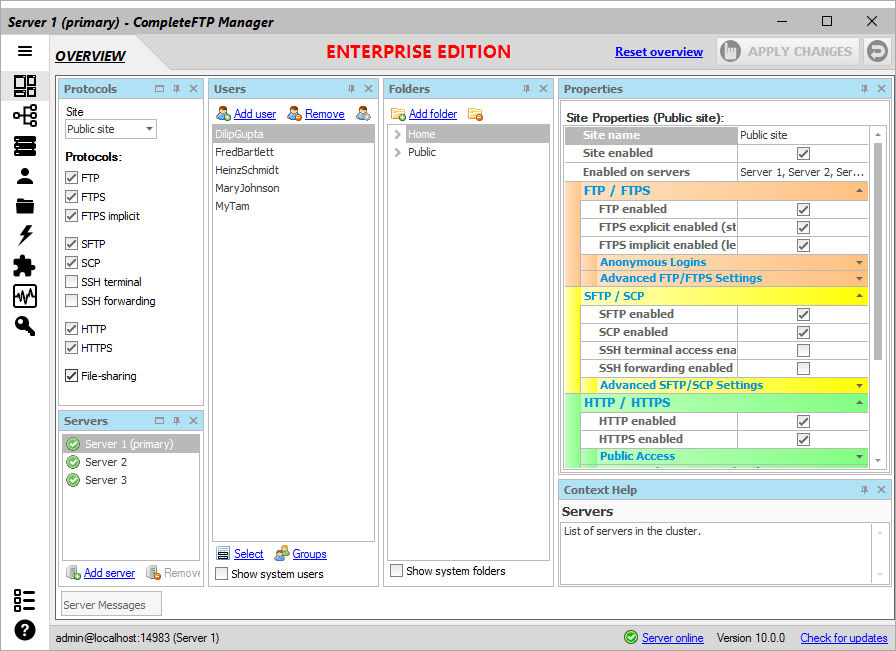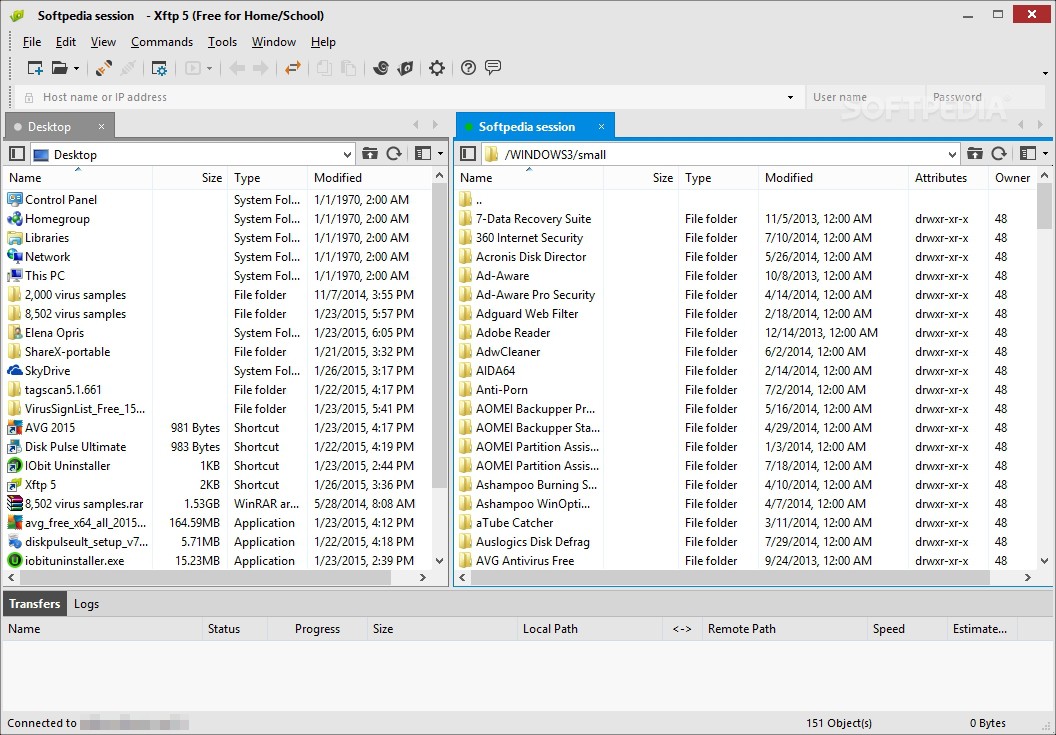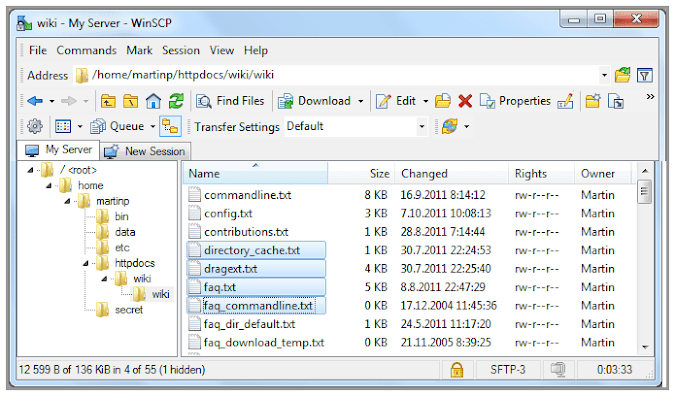
- Sftp client for windows ascii how to#
- Sftp client for windows ascii pro#
- Sftp client for windows ascii password#
The syntax is the same as the Cd command at the local command prompt. The command requires no parametersĬd-The Cd command changes the working directory on the remote computer.

Binary requires no parameters.īye-The Bye command disconnects the FTP session and exits the FTP console. Entering this command sets up the program for binary file transfers. The command requires no parameters, and the default state is off.īinary-The Binary command sets the file-transfer mode to binary and allows the successful transfer of file types other than simple text. The command changes the state from on to off or vice versa. The command requires no parameters.īell-The Bell command tells the FTP program to play a sound when a file transfer finishes. Using the Ascii command tells the FTP program that you plan to transfer a text file. By default, it assumes it's transferring simple text (i.e., ASCII) files if you transfer a binary file (e.g., programs, proprietary document formats, DLLs) in that mode, the files arrive at their destination in an unusable format. It knows that it can transfer files, but it doesn't understand the difference between simple text files and binary files. The syntax isĪscii-The FTP service isn't very bright. In FTP, however, Append lets you combine a local file with a file on the FTP server. ?-The ? command returns Help information for a selected FTP command.Īppend-The Append command works the same way as the command-prompt Append command: It lets you combine two files. If you need to execute a different XP command-processor command in the same window as your FTP session without disconnecting the FTP session, use this command. !-The ! command causes the FTP console to shell to an XP command console. The following is a list of available FTP commands and how you can use them. To get help with any command, use the syntax ? \ By typing ?Īt the FTP prompt, you'll get a list of the available commands. After you enter the interactive FTP console, 42 FTP commands are available to help you manage and use your FTP session.
Sftp client for windows ascii password#
You need to enter something at the password prompt a blank password won't work. Most publicly available FTP servers support anonymous FTP, which lets you enter anonymous as your username and anything (usually your email address) as your password. The host would prompt you for a username and password. In most cases, you would use the FTP client interactively and could simply enter the following command: ftp host_name.domain_įor example, the following line would connect you to the FTP server : ftp Those command parameters let you determine how you will connect to the FTP service on another computer. Where -v suppresses the display of remote server responses, -d enables debugging, -i turns off interactive prompting during multiple file transfers, -n suppresses auto logon upon initial connection, -g disables filename globbing (see information about the Glob command below), -s:filename specifies a text file containing FTP commands (the commands will automatically run after FTP starts), -a lets you use any local interface when binding data connection, -w:windowsize overrides the default transfer buffer size of 4096, -A enables anonymous logon, and host specifies the host name or IP address of the remote host to which you're connecting.

Type ftpĪ useful command-line function available through the Windows FTP client lets you write scripts that execute FTP file transfers and automate FTP tasks. To reach the FTP client, click Start, then click Run.
Sftp client for windows ascii pro#
Windows XP's FTP service installs as part of Microsoft Internet Information Services (IIS) 5.1 the FTP host is available only in XP Professional Edition, and the command-line client is available in both XP Pro and XP Home Edition.
Sftp client for windows ascii how to#
You might find third-party tools' user-friendly interfaces easier to use than the Windows FTP client, but the Windows command-line tool is perfect for occasional FTP users who have the time and interest in learning how to use it. With little effort, you can use the Windows FTP client to manage all your FTP needs. Check out the evaluation versions of these FTP tools, but before you decide to buy, learn how to use the command-line FTP tool that Microsoft built in to all current versions of Windows.

Ipswitch's WS_FTP and GlobalSCAPE's CuteFTP are well-known and commonly used GUI-based FTP tools.

FTP is a standard Internet protocol that lets you easily transfer large files (e.g., images, music) to and from remote computer systems. One of the most common and useful Internet tools for small office/home office (SOHO) and home users is the FTP client.


 0 kommentar(er)
0 kommentar(er)
